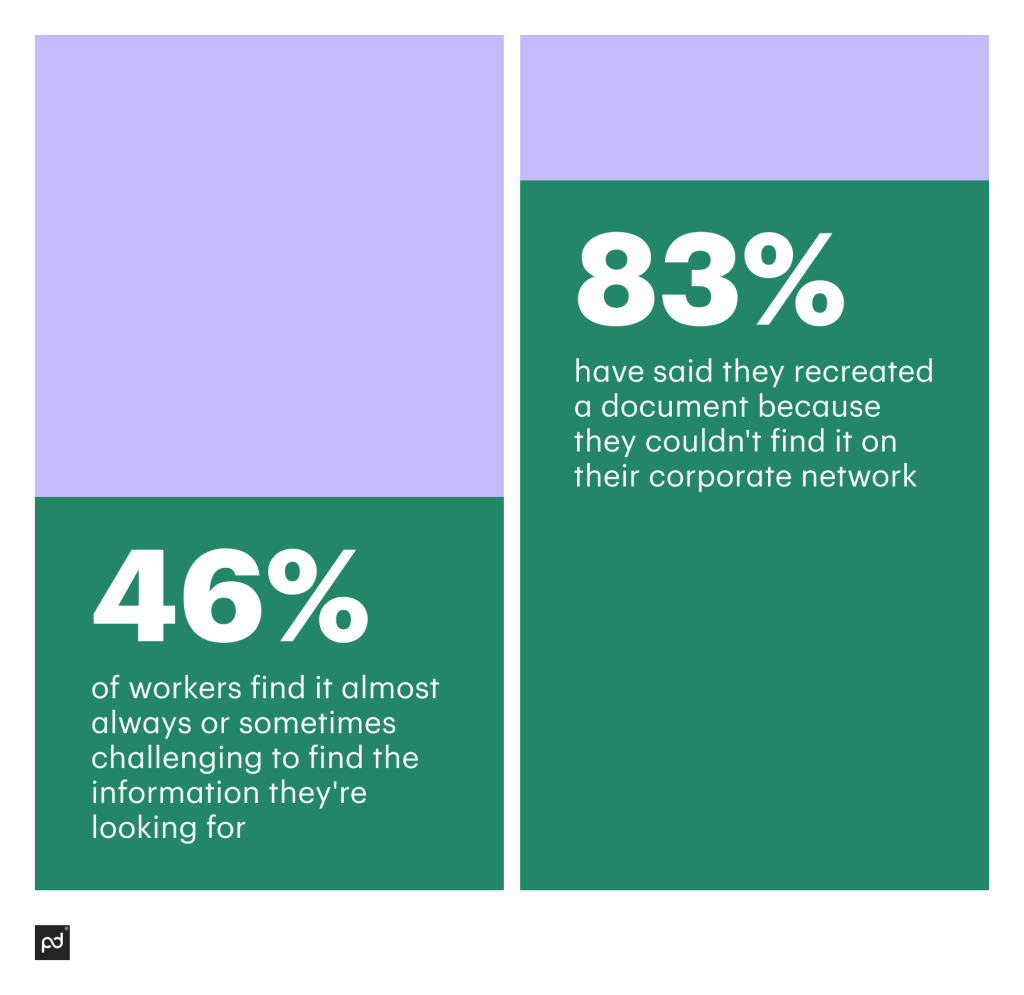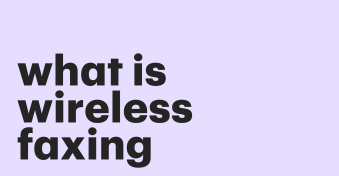You’d be hard-pressed to find a business that doesn’t use collaboration tools.
80% of digital workers surveyed use digital collaboration tools in some capacity, and that’s up 44% from 2019.
But how many of those collaboration tools offer a secure, traceable digital space for sharing documents — like data rooms?
If you just asked yourself, “What is a data room?”, keep reading.
Data rooms have been around in one form or another for a long time, and if you’re here, then you’re probably already familiar with the concept.
We’re going to cover what data rooms are, the ins and outs of data due diligence, the differences between physical and virtual data rooms, and some frequently asked questions.
Let’s get started.
What is a data room?
The simplest data room definition is that it’s a secure online storage site that manages sensitive information and confidential documents.
Also known as a deal room, it’s mainly used for business transactions where information needs to be shared confidentially with authorized stakeholders.
Data rooms provide a secure and organized way to share and collaborate on documents.
They usually have advanced features like access controls, document tracking, version control, and easy collaboration.
For businesses looking to manage, organize, and protect sensitive, confidential information, a data room can be an excellent tool.
For example, you already know that any business deal will require mountains of paperwork.
Today, most of that paperwork will be digitized, but that doesn’t make it any less chaotic.
Anyone with email is familiar with multiple documents going back and forth, getting lost, and cycling through multiple versions.
46% of workers find it almost always or sometimes challenging to find the information they’re looking for, and 83% have said they recreated a document because they couldn’t find it on their corporate network.

You can minimize or completely negate document chaos with the right electronic data room solution. You can store all of your deal documents in one secure location.
You won’t have to worry about sifting through endless email threads to find the correct version of a contract.
What is data room due diligence?
Before we break down what data room due diligence is, let’s run through a quick explanation of what due diligence is.
Due diligence has its origins in the legal system, specifically in the concept of “caveat emptor” or “buyer beware.”
In the early days of common law, the principle of caveat emptor placed the burden of verifying the quality of a product or asset on the buyer rather than the seller.
Buyers had to be careful and, you guessed it, diligent in their evaluation of goods and assets before making a purchase.
There was no legal recourse if they later discovered defects or issues with the product.
Over time, due diligence was altered and expanded to include more formal methods for verifying the quality of assets during transactions.
Today, it’s a widely accepted and standard practice in many industries, including finance, real estate, and more.
So what is data room due diligence?
Virtual data rooms and due diligence are closely connected as data rooms serve as critical tools for conducting due diligence.
A secure and well-organized VDR room can make the whole due diligence process efficient and effective.
Potential buyers, investors, or other authorized parties can review everything in a safe and collaborative environment.
For example, if you’re closing a deal with a company that works in healthcare, you’ll more than likely encounter HIPAA-related documents.
Due to their sensitive nature, HIPAA documents are regulated and must be secure. Thus, using a secure data room for due diligence makes sense.
The difference between a physical and a virtual data room
While you can probably guess the differences between physical and virtual data rooms (VDR rooms) from their names alone, let’s review each to see precisely how they differ.
Physical data room
A physical data room is a secure physical location used to store confidential documents and information related to a business transaction.
It’s typically a dedicated room or series of rooms in a secure building where parties involved in a transaction can meet to review and exchange confidential information.
The rooms are typically equipped with secure filing cabinets, tables, and chairs, and access is tightly controlled to ensure confidentiality.
In the past, physical data rooms were used in industries like banking as the standard way of conducting due diligence during business transactions.
But they have several drawbacks, including high costs, logistical challenges, and the need for in-person meetings.
For example, to meet in person, you need to first schedule a meeting and then have all the participants meet at a specific location.
With a virtual data room, you simply send out personalized email invitations with unique links that allow participants to access the room.
As a result, virtual data rooms (VDRs) with cloud storage models have become more prevalent in recent years as they’re a more cost-effective and efficient way to conduct business.
Virtual data room
A VDR, or virtual data room, is a secured digital location that houses sensitive digital materials and which can be reviewed by authorized parties when needed.
VDRs are useful in a number of circumstances, like when you need to work on a project with sensitive materials, initial public offerings, court proceedings, or when you need to collaborate on a shared project, and you want to do it in a secure location.
With VDRs, you can access and review documents immediately.
You don’t need to drive to another location or coordinate meeting times.
You have to be an authorized user with permission to access the VDR, but beyond that, it’s much more accessible than a physical data room.
VDRs are designed with the utmost security and encryption to protect users and the sensitive materials being viewed.
Unlike physical data rooms, VDRs come with a number of additional features that can aid in project collaboration.
Because they can be accessed through a web browser or software system, users can take advantage of document control, activity tracking, and more.
With a VDR, you can do more with other teams and outside parties while maintaining the highest level of security.
Easily create a digital sales room and effectively collaborate with multiple parties
So, now you know the answer to “What is a data room?”, how can you go about getting the benefits of using one?
Creating a digital sales room is as easy as signing up for the right data room software, and we’re confident in saying that PandaDoc data Rooms experience is the best solution.
You can easily create a digital data room and then share invitations to the space via email links.
Once you’re in the room, you can accomplish a number of tasks, including providing relevant content to prospects, sharing documents with necessary participants, and defining data access levels.
Any deal you work on will need multiple signatures; start that journey the easy way with PandaDoc–an established leader in document creation and eSignature software.
In your personalized data room, you can review and approve multiple documents and then coordinate guided signing with multiple parties.
You won’t need to worry about editing conflicts and process delays because all your documents will be in one location.
Streamline your digital sales and collaboration efforts today with PandaDoc so you always have a virtual data room for every deal.
Schedule a 15-minute demo to learn more.
Frequently asked questions about data room
-
Compared to physical data rooms, virtual data rooms are incredibly cost-effective, especially when you factor in the ease of accessibility and included security measures. Most virtual data room providers will offer a variety of plans to suit different business needs. You can often find plans based on the number of users you have, how much storage or usage you need, or the additional features you want.
-
Cloud storage and virtual data rooms differ in several key ways. Cloud storage is mainly designed for personal use. Virtual data rooms are specifically designed for businesses to securely store and share sensitive documents and information. Virtual data rooms also have more advanced security features like two-factor authentication and user permissions.
Cloud storage solutions also typically offer lower pricing plans than virtual data rooms designed to meet the specific needs of businesses and organizations.
-
Your data room should contain all the documents and information required for a specific business deal or transaction. That may include financial statements, legal documents, due diligence materials, confidential information, regulatory compliance documents, and other transaction-related documentation.
Features you’ll need from a VDR solution include access control, collaboration features, and high-level security.
Disclaimer
PandaDoc is not a law firm, or a substitute for an attorney or law firm. This page is not intended to and does not provide legal advice. Should you have legal questions on the validity of e-signatures or digital signatures and the enforceability thereof, please consult with an attorney or law firm. Use of PandaDocs services are governed by our Terms of Use and Privacy Policy.


